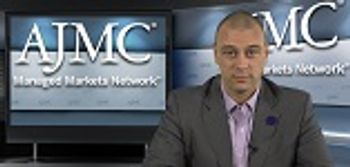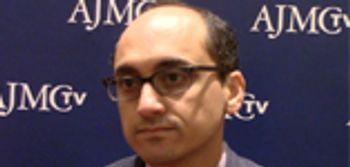
What we're reading, December 23, 2015: CMS releases data on the most expensive Medicare drugs, while HHS reports strong enrollment numbers on HealthCare.gov, and Hillary Clinton outlines a plan to spend $20 billion on Alzheimer's disease research.


What we're reading, December 23, 2015: CMS releases data on the most expensive Medicare drugs, while HHS reports strong enrollment numbers on HealthCare.gov, and Hillary Clinton outlines a plan to spend $20 billion on Alzheimer's disease research.

An analysis revealed growing evidence of improved access to and affordability of care after the implementation of the Affordable Care Act, but gaps remain, especially for low-income adults.

Several economists have proposed a way to level the financial playing field between employer and individual health insurance markets.

Americans are more likely to be facing higher premium costs than in previous years, according to Gallup poll results.

Democrats and Republicans agreeing on something having to do with the Affordable Care Act is unusual, but there is one aspect of the healthcare law that both parties feel the same about: the excise, or Cadillac, tax.

What we're reading, December 17, 2015: Congress is expected to pass a spending plan that includes 3 changes to the Affordable Care Act; a new analysis estimates 2016 premiums for marketplace plans will increase 11%; and one-third of Americans die from cardiovascular disease.

A study in the Journal of Clinical Oncology predicts financial stress on Medicare Part D beneficiaries on oral anticancer medicines, even after the expected closing of the donut hole in 2020.

Telemedicine in mobile stroke treatment can reduce time to evaluation and thrombolysis.

What we're reading, December 16, 2015: a new study casts doubt on what experts thought they knew about healthcare costs; unprecedented interest in health insurance coverage has prompted the government to extend the deadline for full-year 2016 coverage; and a law to create multi-state health plans won't reach it's 2017 goal.

While cost is an important component of value, it tells only a small part of the cancer care story. By focusing on issues of payment and cost alone, we miss our opportunity to engage cancer care stakeholders in the process of creating a more effective system of care.

This article describes provider networks and benefit design-including deductibles, cost-sharing, and maximum out-of-pocket limits-for oncology care in 2015 health insurance exchanges.

What we're reading, December 15, 2015: call centers overwhelmed by last-minute rush for health insurance enrollment; AstraZeneca exploring deal with Acerta Pharma; and despite near universal health insurance coverage in Massachusetts, patients have access issues.

Providers and payers came together to discuss challenges and share success stories as they adapt to the changing healthcare realm.

The advocacy affiliate of the American Cancer Society, the American Cancer Society Cancer Action Network, is working across the country to pass and implement strong oral chemotherapy fairness laws to help ensure cancer patients have access to the recommended course of treatment without added out-of-pocket costs based on how their drug is administered.

Addressing the financial burden of cancer treatment requires efforts at the policy, payer, and clinic level, and implementation of these strategies, in clinical practice, requires commitment from various stakeholders.

Most physicians consider telehealth a promising tool in improving patient access to primary care services, but only 15% use it in their practice.

Patients with chronic conditions, such as chronic obstructive pulmonary disease, often have high-cost health needs that make choosing a health plan difficult.

Consumer demand for engagement in health information technology is a vital aspect of achieving national health goals, but multiple barriers prevent this demand from being filled.

This week in managed care, an analysis found the penalty for being uninsured will exceed the cost of insurance for most Americans in 2016, thousands met for the annual meeting of the American Society of Hematology, and Horizon Blue Cross Blue Shield's OMNIA plan gets good news and bad news in New Jersey.

The National Coalition for Cancer Survivorship has submitted comments to CMS, providing feedback on the Merit-Based Incentive Payment System and Alternative Payment Models proposed by CMS as it transitions toward value-based reimbursement.

When considering how to rectify the rising prices of drugs, there are a number of interventions at multiple levels that can work to decrease costs to patients and the price of the drug, explained Yousuf Zafar, MD, MHS, associate professor in the Division of Medical Oncology at Duke Cancer Institute.

Health economist Austin Frakt, PhD, of Boston University, weighs in on Ben Carson’s healthcare plan to repeal the Affordable Care Act, implement personal savings accounts for all citizens, and reform Medicare and Medicaid.

What we're reading, December 11, 2015: CMS penalized hospitals for patient safety deficiences; MedPAC approved reducing Medicare Advantage plan reimbursement; and Kentuckians favor keeping Medicaid expansion.

Nearly 31% of Americans confirmed that they have postponed medical treatment for either themselves or a family member in 2015 because of the cost.

Electronic health record data can be used to predict patient absenteeism accurately. Predictive overbooking of missed appointments can significantly increase service utilization.

259 Prospect Plains Rd, Bldg H
Cranbury, NJ 08512
© 2025 MJH Life Sciences®
All rights reserved.
